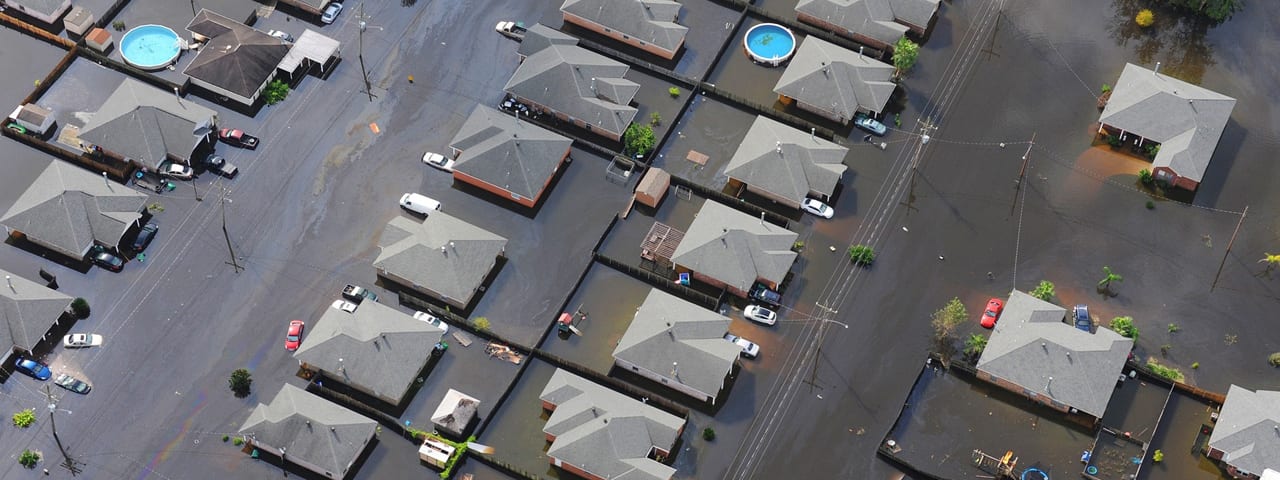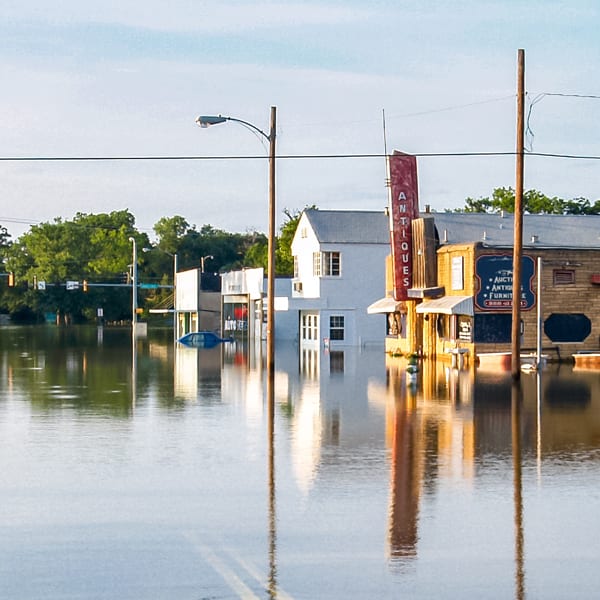In the US alone, flooding causes almost $8 billion in damages each year.
Flooding is the most common natural disaster in this country. And as many people learn the hard way, most standard homeowners and commercial insurance policies don’t include flood coverage—it must be purchased as a separate policy.
Who Needs Flood Insurance?
Most of us associate flooding with coastal storm surge or rivers cresting after heavy rains. However, flooding has many causes beyond thunderstorms and hurricanes, such as:
- Levee or dam breaches
- Rapid snow melt over ground that is still frozen
- Land development with poor drainage
- Changes in topography due to wildfires, leading to mudslides
Some areas are more high-risk than others, but flooding can affect anyone—one out of every five flood insurance claims comes from a policyholder outside of a high-risk area. Just an inch or two of water can do an incredible amount of damage.
If you are in a high-risk area, you may be required to carry flood insurance by your mortgage lender or if you have a federally-backed loan. Check the FEMA flood zone map to see if your property is at risk.
Flood Insurance for Homes
Residential flood insurance typically provides coverage against structure damage (up to $250,000) as well as coverage to repair or replace personal belongings, such as appliances, furniture, and clothing (up to $100,000). Some cleanup costs may be included. And if basic coverage does not seem like it’s enough, excess limits may be purchased.
What’s Not Covered
Homeowners might be surprised to find out what isn’t covered by flood insurance. This is particularly important for those living in the Northeast, where residential basements are fairly common.
- Vehicles, though auto insurance may provide some coverage
- Outdoor items, such as decks, pools, hot tubs, fences, barbecues, lawn furniture
- Wells and septic systems
- Living expenses (such as for temporary housing)
- Limited coverage for crawl spaces and basements; heating equipment may be covered by building insurance, and appliances like storage freezers and laundry equipment may be covered as personal belongings, but other personal items likely won’t be covered.
Flood Insurance for Businesses
Like with homeowners insurance, most commercial property insurance does not include flood coverage. Whether you are a commercial tenant or a building owner, flooding can devastate your bottom line.
There are two types of commercial flood insurance:
- Commercial Contents: This covers business materials, such as inventory, equipment, machinery, and merchandise.
- Commercial Building: This covers the structure itself. Even if you aren’t the building owner, you can still insure any enhancements you made to the space.
Flood insurance also covers prevention, such as sandbagging, as well as cleanup, such as removal of debris and mold mitigation.
There are some exceptions. When purchasing commercial flood insurance, here are some things to keep in mind:
- You may need a separate policy for each structure on your property.
- Commercial flood insurance doesn’t automatically cover business interruption or loss of profits. You need to purchase extra coverage.
Get a Quote
If you are considering flood insurance for your home or business, contact Banas & Fickert Insurance Agency. We can help you determine how at-risk your property is, then work with you to amend your current Homeowners or Commercial polices for more complete coverage.


